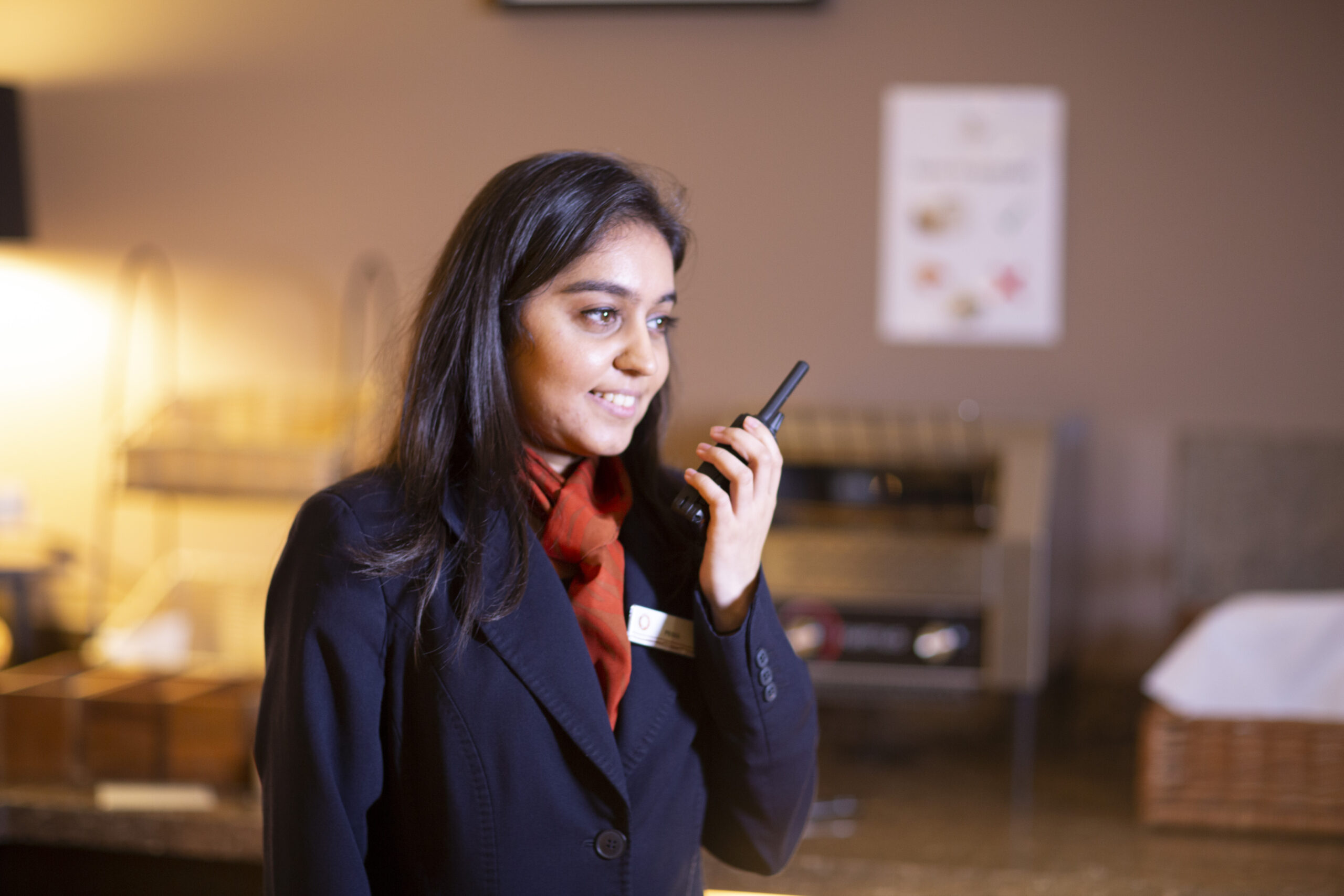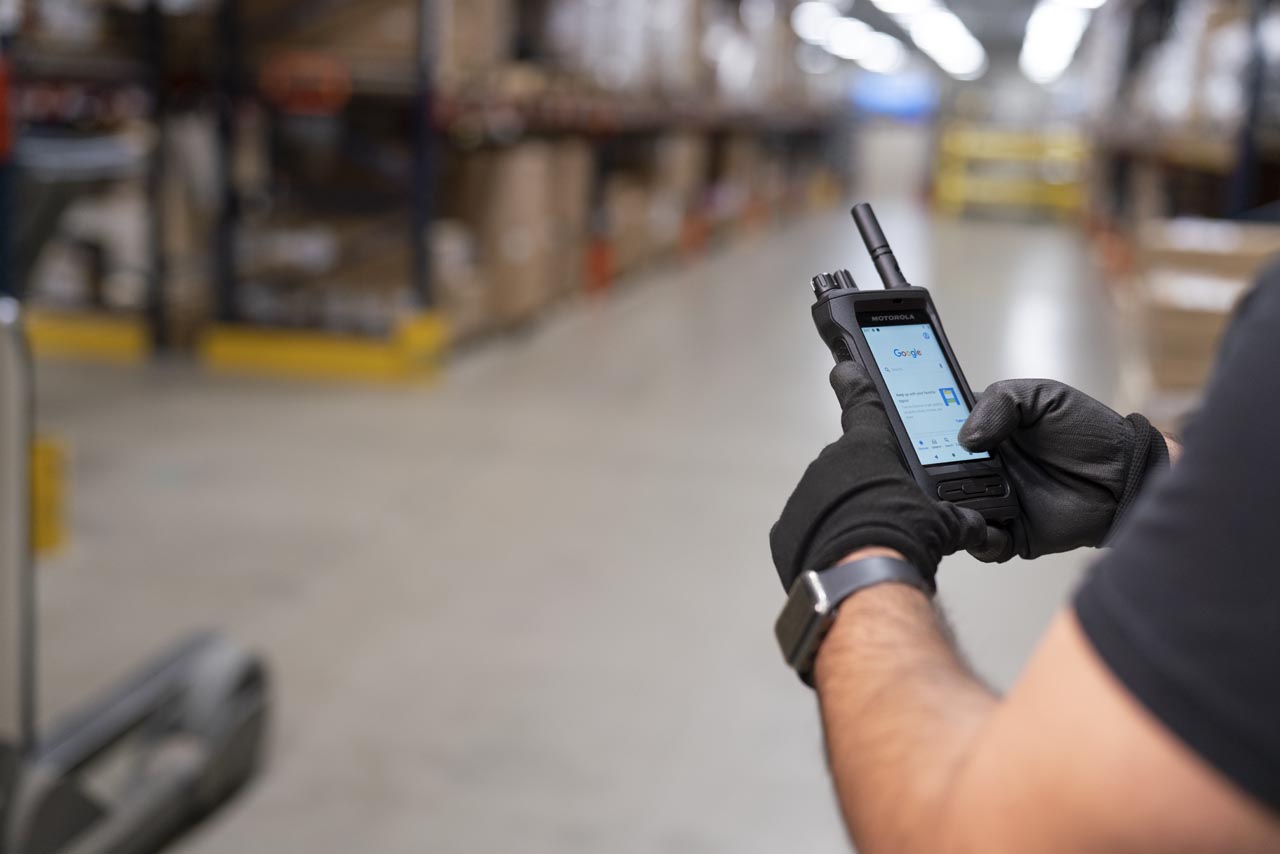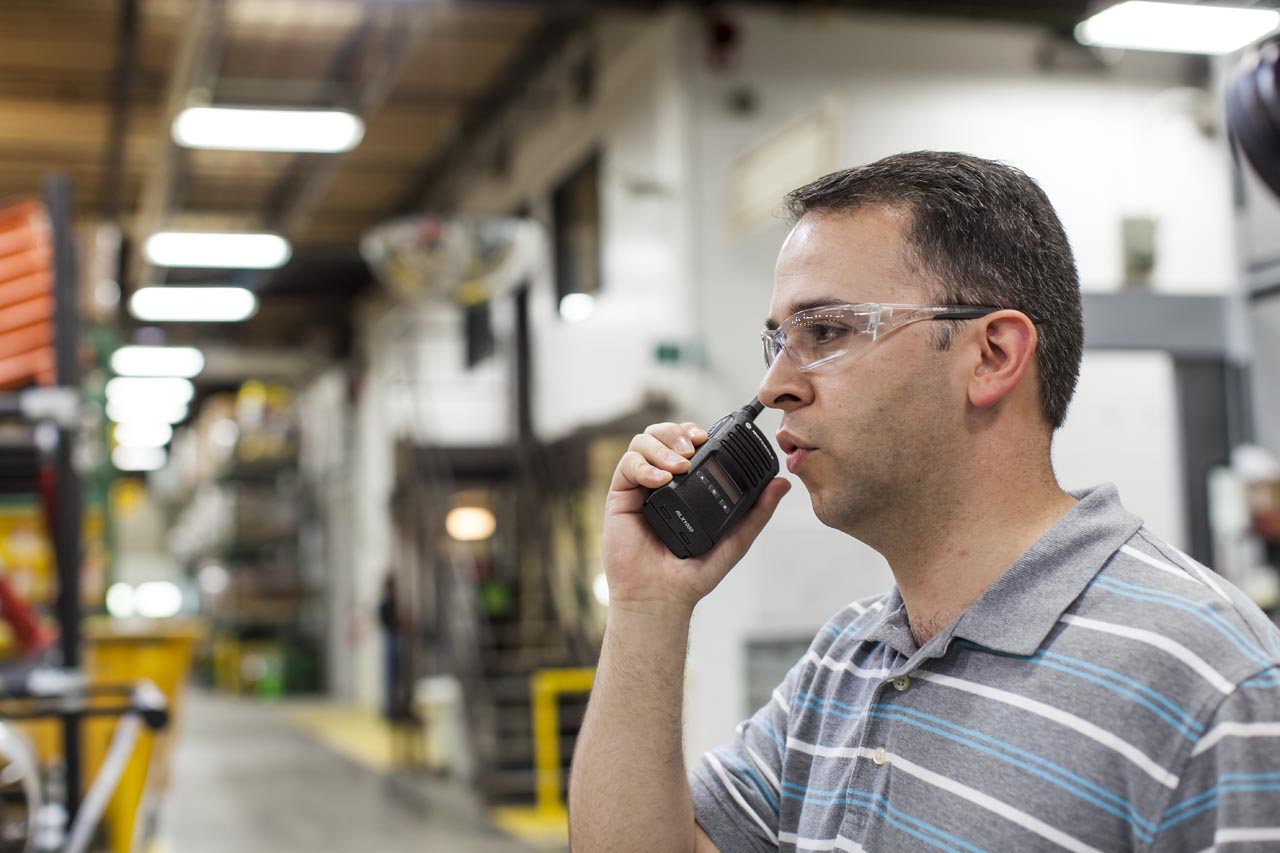The Ultimate Guide to Two-Way Radios


Two-way radios, often referred to as walkie-talkies, are indispensable communication tools used in various sectors, from emergency services to construction and beyond. This comprehensive guide, “The Ultimate Guide to Two-Way Radios,” will cover everything you need to know about two-way radio systems, frequencies, licensing, and advanced features.
Whether you’re looking for reliable communication in remote areas or simply need a portable radio for short-range communication, this guide will help you choose the best solution for your needs.
What is a Two-Way Radio?
Two-way radios are wireless devices that allow users to communicate over radio waves, providing seamless communication between parties. These devices can be used for both sending and receiving messages, making them essential in environments where fast, clear, and reliable communication is critical.
Key Features of Two-Way Radios
- Portability: Two-way radios, including walkie talkies, are designed for ease of use on the go. Many models are compact, durable, and lightweight, making them perfect for both indoor and outdoor use.
- Reliability: Unlike cell phones, two-way radios operate on radio frequencies that do not rely on cellular networks, ensuring continuous communication even in remote or hazardous environments.
- Power Output: The power output of a two-way radio affects its communication range. Higher power outputs generally provide better range, making it ideal for large-scale operations and long-distance communication.

How Two-Way Radios Work
Two-way radios transmit voice messages over radio signals via different frequency bands. These frequencies vary depending on the type of radio and its intended use. VHF (Very High Frequency) and UHF (Ultra High Frequency) are two common frequency bands used by modern two-way radios, each offering specific advantages depending on the environment and terrain.
Types of Two-Way Radios
• VHF Radios: These radios typically operate in the 30-300 MHz range and are ideal for communication over longer distances in open areas with minimal obstructions.
• UHF Radios: Operating in the 300-3,000 MHz range, UHF radios provide better penetration through obstacles such as buildings, making them perfect for urban environments or indoor communication.
Walkie Talkies vs. Two-Way Radios
Many people use the terms “walkie talkie” and “two-way radio” interchangeably, but there are some differences. While both devices perform the same basic function of two-way communication, walkie-talkies are generally designed for consumer use, often offering shorter range and fewer features compared to professional two-way radios that are more commonly used by businesses for critical communication use and daily operations among teams.
Frequency Bands for Two-Way Radios
When choosing a two-way radio, selecting the right frequency band is crucial for optimal performance. Frequency bands such as the VHF radio band and UHF radio band differ in their range and performance in various environments. Here’s a breakdown:
- VHF (Very High Frequency): Best for outdoor communication and long-range use, particularly in open areas with fewer obstructions.
- UHF (Ultra High Frequency): More suited for short-range communication in urban settings where signal penetration through walls and buildings is required.
Why Frequency Bands Matter
Each frequency band operates in different ranges of the electromagnetic spectrum, affecting how far signals can travel. For instance, VHF radios work better over long distances in open terrain, while UHF radios excel in environments where signals must pass through buildings or dense foliage. Selecting the correct frequency band is essential for ensuring that your two-way radio provides the best communication performance for your needs.
Types of Two-Way Radios Based on Licensing
• Licensed Radios: These radios require users to apply for a license from regulatory bodies like the OFFCOM and COMREG. Licensed radios typically offer higher power output and can operate on specific frequencies that allow for better range and less interference.
• License-Free Radios: These radios do not require a license to operate, making them an excellent choice for small businesses, outdoor enthusiasts, or recreational users. They usually operate on frequencies designated for public use.
Two-Way Radio Communication for Different Needs

Emergency Services
Two-way radios are vital for coordinating efforts between fire, police, and ambulance teams during emergencies. Whether responding to natural disasters, accidents, or security threats, radios allow teams to communicate in real-time, ensuring rapid response times and effective resource allocation.
In high-pressure, rapidly changing situations, clear communication can save lives. Radios can be used in areas where cellular networks might be down or overloaded, offering a more dependable solution for emergency services in remote or disaster-stricken areas.

Security Personnel
In private security and law enforcement, two-way radios are used for constant communication between security officers, supervisors, and emergency responders. They provide a secure and immediate means to alert others to threats, breaches, or security concerns in real-time, ensuring the safety of people and property.
Security teams need to be connected at all times, whether they’re patrolling premises, monitoring surveillance equipment, or responding to incidents. Radios help maintain situational awareness and improve coordination, especially during high-stress or emergency scenarios.

Transportation and Fleet Management
In the transportation industry, two-way radios are used by fleet managers, drivers, and field teams to coordinate deliveries, report progress, and manage any delays or issues on the road. Radios also help monitor vehicles’ positions and ensure safety during transportation.
In large transportation networks, such as delivery services or public transportation systems, radios help manage logistics in real-time and respond quickly to road incidents or changes in schedules.

Manufacturing and Industrial Settings
Manufacturing facilities, warehouses, and industrial settings use two-way radios for day-to-day operations, safety protocols, and coordinating workers. Radios help in situations such as managing assembly lines, overseeing operations, or facilitating equipment maintenance.
Two-way radios facilitate immediate communication in large, often noisy environments where other forms of communication may be ineffective. This enhances productivity and reduces workplace hazards.

Hospitality Industry
Hotels, resorts, and large event venues use two-way radios to enable staff to coordinate operations such as guest requests, housekeeping, maintenance, and security. Radios help to ensure prompt responses and efficient service, ultimately enhancing the guest experience.
Real-time communication between different departments is key to managing large venues, maintaining guest satisfaction, and responding to emergencies such as medical issues or fire alarms.

Construction and Logistics
On construction sites, two-way radios are used by foremen, engineers, and workers to ensure safety, streamline operations, and maintain effective communication across a potentially noisy and chaotic environment. Logistics teams use radios to track shipments, coordinate deliveries, and manage inventory across warehouses and distribution centres.
Radios allow for immediate communication, which is essential for quickly addressing safety concerns, equipment needs, or changes in project plans. On construction sites, effective communication can minimize accidents and enhance operational efficiency.

Event Management
For large-scale events such as concerts, sports events, or conferences, two-way radios are used by event staff, security, and organisers to coordinate logistics, manage crowd control, and respond to any unexpected incidents.
Events often involve a large number of people and moving and setting up equipment. Two-way radios allow for quick communication between teams spread across different venues or sections, reducing response times and ensuring safety and operational efficiency.

Military and Defense
In military operations, two-way radios are used for secure and immediate communication between units, ensuring that missions are coordinated and teams stay informed in real-time. Radios are crucial for tactical communication in the field, whether on the move or stationed at base camps.
In hostile or remote environments where communication infrastructure is limited or non-existent, two-way radios provide a critical link between soldiers and commanders, allowing for coordinated efforts and efficient response to changing battlefield conditions.

Healthcare and Medical Emergency Teams
Medical teams, including paramedics and hospital staff, rely on two-way radios for fast and efficient communication, particularly in emergency situations. They use radios to coordinate patient care, communicate with emergency responders, and share critical information about medical cases.
In hospitals and emergency medical services (EMS), timely communication is vital to ensuring patient safety and efficient care. Radios ensure that teams can communicate quickly, even in high-stress environments, and respond promptly to emergencies.

Agriculture and Farming
On large farms or agricultural operations, two-way radios are used to coordinate workers, manage equipment, and report crop conditions or livestock issues. Radios are especially useful on expansive properties where cell phone signals may be weak or unreliable.
Radios help ensure that everyone on the farm can communicate in real-time, even when spread out over a large area, helping farmers manage their operations more efficiently and address problems before they escalate.
Enhancing Communication with Advanced Features
Modern two-way radios come with various enhanced features that improve communication, such as:
• Digital Two-Way Radios: These radios use digital technology to offer better voice clarity, greater range, and more efficient use of radio frequencies.
• GPS Tracking: Some radios feature GPS tracking, which is particularly useful in emergency services and large-scale operations.
• Hands-Free Communication: Some models offer hands-free functionality, allowing users to keep their hands free for other tasks while communicating.
The Best Frequency for a Two-Way Radio
The best frequency for a two-way radio depends on several factors:
• Environment: For outdoor communication with minimal obstructions, VHF radios tend to work better. For urban environments with buildings and obstacles, UHF radios provide better performance.
• Range: If you need long-distance communication, consider using VHF frequencies or higher power output radios.
• Interference: Different frequency bands have varying levels of interference. UHF frequencies are more prone to interference from buildings, while VHF radios may experience more interference in densely populated areas.
How to Increase the Range of your Two-Way Radio
The range of your two-way radio is determined by several factors, including the radio’s power output, frequency band, and environmental conditions. To increase your radio’s range, consider the following tips:
• Use Higher Power Output Radios: Radios with higher power outputs can cover longer distances, especially in open areas with minimal interference.
• Choose the Right Frequency: UHF radios typically offer better range in urban environments, while VHF radios excel in open spaces.
• Consider External Antennas: Adding an external antenna can increase the power and range of your two-way radio.

Choosing the Right Two-Way Radio System
When selecting a two-way radio system, several key factors should be considered to ensure that the chosen device meets the specific needs of your communication environment. Below are some of the essential factors to consider: Whether you are using digital radios, portable radios, or a walkie-talkie for short-range communication, each system offers unique benefits.
1. Frequency Band (VHF vs. UHF)
• Why It Matters: The frequency band of a two-way radio determines its ability to transmit signals over different distances and through various obstacles.
• VHF (Very High Frequency) radios are better suited for long-range communication in open areas where there are fewer obstacles, making them ideal for outdoor use.
• UHF (Ultra High Frequency) radios, on the other hand, excel in environments with obstructions, such as buildings or dense foliage, as they are better at penetrating these barriers.
• Consideration: Choose the appropriate frequency based on the physical environment where the radios will be used (e.g., VHF for rural areas, UHF for urban or indoor settings).
2. Power Output
• Why It Matters: Power output directly impacts the range and clarity of communication. Higher power output allows the radio to transmit signals over greater distances.
• Consideration: If you need long-range communication for large areas or across multiple buildings, opt for radios with higher power output. However, if your communication needs are short-range, a lower power radio may suffice and can help conserve battery life.
3. Battery Life
• Why It Matters: A two-way radio’s battery life is essential for ensuring reliable communication during extended use, particularly in remote or emergency situations.
• Consideration: Choose radios with long battery life if they will be used in the field for long periods. Consider the battery type (rechargeable or disposable) and whether it can be easily replaced or charged on-site.
4. Licensing Requirements (Licensed vs. License-Free Radios)
• Why It Matters: Some two-way radios require a license to operate legally on specific frequencies, while others do not. Compliance with local regulations is essential to avoid interference with other communication systems and to prevent legal issues.
• Licensed Radios offer greater range and can operate on private frequencies, which reduce the likelihood of interference from other users. These radios typically have higher power output.
• License-Free Radios are typically used for short-range communication and are ideal for smaller, non-commercial needs such as outdoor events or family use.
• Consideration: If you need radios for business purposes, particularly in large or remote areas, consider licensed radios. For small-scale communication needs, license-free radios may be sufficient.
5. Digital vs. Analog Radios
• Why It Matters: The difference between digital and analog radios lies in the method of signal transmission and reception, affecting features such as voice quality, range, and interference resistance.
• Digital Radios often offer clearer voice quality, greater range, and are more efficient in terms of frequency use, providing better performance in crowded frequency environments.
• Analog Radios are typically less expensive and suitable for simpler, short-range communication but are more susceptible to interference and static.
• Consideration: If you need advanced features like GPS tracking or enhanced voice clarity, opt for digital two-way radios. For basic, short-range communication, analog radios may be a more cost-effective solution.
6. Range and Terrain
• Why It Matters: The environment where two-way radios will be used significantly affects the effective range. Obstructions like buildings, forests, or even mountains can reduce the communication range of radios.
• Consideration: UHF radios tend to have better performance in urban environments with many obstacles, while VHF radios perform better in open, rural areas. If you require communication across long distances, consider radios with higher power output and suitable frequency bands.
7. Durability and Environmental Resistance
• Why It Matters: In industries like construction, security, and emergency services, radios are often exposed to harsh conditions such as dust, moisture, or extreme temperatures.
• Consideration: Choose radios with rugged features such as IP ratings for water and dust resistance, shock resistance, and MIL-STD certifications for military-grade durability if you operate in hazardous environments.
8. Audio Quality
• Why It Matters: Clear communication is critical, especially in noisy environments. Radios with better voice clarity ensure that the transmitted message is easily understood, even in environments with high levels of background noise.
• Consideration: Look for radios that offer features like noise-canceling technology or high-quality speakers for enhanced voice quality, especially if your work involves noisy machinery or large crowds.
9. Communication Features
• Why It Matters: Different radios offer various features to enhance communication, such as hands-free operation, group communication on the same channel, GPS tracking, and emergency alert systems.
• Consideration: Select radios that offer essential features that match your operational needs. For example, if your team operates in remote areas, consider radios with GPS tracking or emergency alerts for better safety.
10. Cost and Budget
• Why It Matters: The price of two-way radios varies significantly depending on their features, durability, and range. It’s important to balance functionality with cost to get the most value for your investment.
• Consideration: Budget-friendly options like license-free walkie-talkies may work for personal or small-scale communication. However, for larger, more critical operations, investing in digital radios or high-power licensed radios may be worth the extra cost for better performance and reliability.


Stay Connected Anytime, Anywhere
Explore how Critico’s reliable, cutting-edge two-way radio solutions can boost efficiency, safety, and connectivity for your team.

FAQ
What are three basic rules for using two-way radios to communicate?
• Speak clearly and concisely.
• Wait for the channel to be clear before transmitting.
• Use designated codes or language for efficient communication.
What is the difference between a walkie-talkie and a two-way radio?
Walkie-talkies are consumer-grade devices with a limited range, while two-way radios are typically professional-grade, offering higher power output, better voice quality, and enhanced features.
How do I increase the range of my two-way radio?
Opt for a model with higher power output, select the appropriate frequency, and use external antennas to enhance signal strength.
What is the best frequency for a two-way radio?
The best frequency depends on your environment. VHF is ideal for open areas, while UHF is better for urban settings with obstructions.
Two-way radios play a crucial role in ensuring reliable communication across various industries. Whether you are using portable radios, digital two-way radios, or walkie-talkies, understanding how to choose the right frequency, maximize range, and comply with regulations is essential. With advancements in digital technology and enhanced radio systems, two-way radios continue to offer efficient and reliable communication solutions for diverse communication needs.

Get in Touch
For more information on how to choose the right two-way radio and how Critico’s solutions can benefit your organisation, contact us today.
